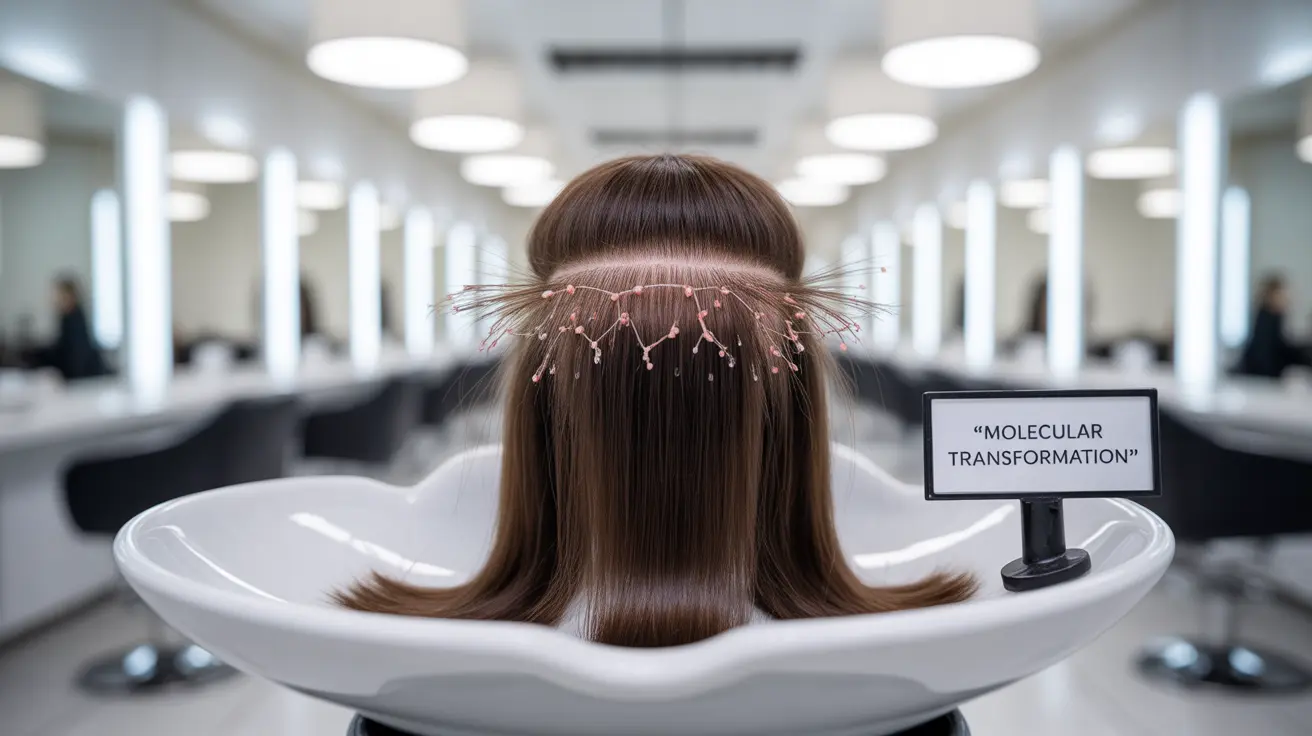Japanese hair straightening, also known as thermal reconditioning, has gained popularity for its ability to deliver sleek, straight hair that lasts for months. However, many people have concerns about its safety and potential risks. This comprehensive guide examines the safety considerations, potential risks, and important factors to consider before undergoing this chemical hair treatment.
Understanding Japanese Hair Straightening
Japanese hair straightening is a chemical process that permanently alters the structure of your hair using a combination of thermal reconditioning solutions and heat treatment. The procedure typically takes several hours and involves applying a chemical solution to break down the hair's bonds, followed by intense heat styling to reset these bonds in a straight position.
Safety Considerations for Different Hair Types
While Japanese hair straightening can be effective, its safety largely depends on your hair type and condition. Not all hair types are suitable candidates for this treatment, and understanding these differences is crucial for preventing damage.
Ideal Candidates
- People with healthy, virgin hair
- Those with moderately textured or wavy hair
- Hair that hasn't been chemically treated recently
- Thick, coarse hair types
High-Risk Categories
- Those with severely damaged or brittle hair
- People with multiple chemical treatments
- Individuals with fine or thin hair
- Those with significant hair loss or scalp conditions
Potential Health Risks and Concerns
Understanding the potential risks associated with Japanese hair straightening is essential for making an informed decision about the treatment.
Short-term Risks
- Chemical burns or scalp irritation
- Excessive dryness and brittleness
- Hair breakage
- Allergic reactions
- Scalp sensitivity
Long-term Considerations
- Progressive hair weakening
- Cumulative chemical damage
- Changes in natural hair texture
- Potential scalp sensitivity issues
- Increased hair fall
Minimizing Risk and Damage
To ensure the safest possible experience with Japanese hair straightening, consider these essential precautions:
- Choose a certified and experienced stylist
- Complete a patch test before treatment
- Follow all pre-treatment preparation instructions
- Maintain proper aftercare routines
- Wait appropriate intervals between treatments
Post-Treatment Care Guidelines
Proper aftercare is crucial for maintaining healthy hair after Japanese straightening treatment. This includes:
- Using sulfate-free shampoos and conditioners
- Avoiding heat styling for several days
- Protecting hair from chlorine and salt water
- Regular deep conditioning treatments
- Scheduling regular trim appointments
Frequently Asked Questions
- Is Japanese hair straightening safe to use on all hair types without causing damage?
No, Japanese hair straightening isn't safe for all hair types. It's best suited for healthy, virgin hair that's moderately textured or wavy. Those with severely damaged, chemically treated, or very fine hair should avoid this treatment to prevent potential damage.
- What are the short-term and long-term health risks of Japanese hair straightening chemicals?
Short-term risks include chemical burns, scalp irritation, and hair breakage. Long-term risks may involve progressive hair weakening, texture changes, and potential scalp sensitivity issues. The chemicals used can also cause cumulative damage if treatments are repeated too frequently.
- How can I minimize hair breakage and damage after Japanese hair straightening treatment?
To minimize damage, use sulfate-free hair products, avoid heat styling initially, deep condition regularly, and follow all aftercare instructions provided by your stylist. Regular trims and proper maintenance are essential for preventing breakage.
- Are there any known links between Japanese hair straightening and increased cancer risk?
While some hair treatments contain potentially harmful chemicals, there isn't conclusive scientific evidence linking Japanese hair straightening specifically to increased cancer risk. However, it's important to choose reputable salons that use high-quality products and follow proper safety protocols.
- Who should avoid Japanese hair straightening due to scalp sensitivity or pre-existing hair damage?
Individuals with sensitive scalps, previously chemically treated hair, severe damage or breakage, active scalp conditions, or very fine/thin hair should avoid Japanese hair straightening. Those with recent chemical treatments or color services should also wait before pursuing this treatment.




